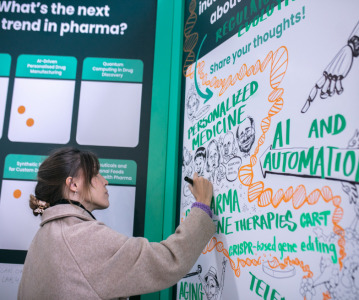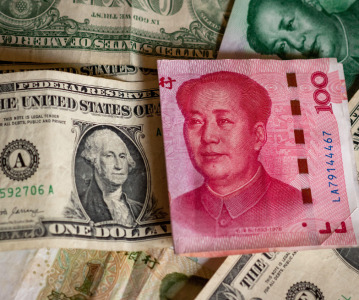World’s Pharmaceutical Development Manufacturing Base Moving to India

The India Brand Equity Foundation (IBEF) has compiled its findings and released an overview of the current generics market in India. They predict that the Indian pharma market is now at the precipice of the next stage in its development, having seen manufacturing innovation and development technologies rise, thanks to the explosion in generics production.
During the last 3 years, exports of pharmaceuticals (largely generics) have grown at more than 21.5% (CAGR) and now accounts for over $13 billion in annual sales. Highlighting India’s dominance, nearly 40% of Abbreviated New Drug Applications (ANDA) received by FDA in 2012 were from India, with a further 87 confirmed and another 25 already received between January and June 2013.
This huge growth in generics production has seen the country become a hotbed of manufacturing innovation — India has more than 3000 DMFs registered with USFDA — which coupled with increased investments in R&D means India is now ready to challenge traditional Big Pharma and start producing more patented products. A natural evolution of the success of the generics market has been the rise in supergenerics across India where much R&D spend is currently being invested (e.g., Lincoln Pharma’s patent for NDDS).
With the world’s pharmaceutical development manufacturing base moving to India — there are 546 USFDA approved company sites (second only to the US), 23 companies holding 1100 authorisations with UK's MHRA, and 166 companies with CEPs (Certificates of Suitability) from EDQM — coupled with the rise in supergenerics, the country’s next natural step is to use its world leading development expertise in the creation of new chemical entities.
Recognising this opportunity, the Government of India is putting in place supportive initiatives with the goal of cementing the country’s position as the ‘pharmacy of the world’ and creating a global innovation hub. With generics predicted to rise to 35% of global pharmaceutical market value by 2016 (some $400 billion+), and with an annual growth rate of 27% amongst Indian generics exports (comparing very favourably with the global average of 10%) the Government and Pharmexcil are forecasting much of this revenue will be reinvested across the country in new research, leading to a steady pipeline of future drug targets.
In support of this, the Indian Government has committed to three schemes including a major multi-billion dollar initiative with 50% public funding through a public–private partnership (PPP) model to harness India’s innovation capability. In addition, the Government has made tax-breaks available to the pharmaceutical sector and a weighted tax deduction of 150% for any R&D expenditure incurred. In addition, they have also introduced 19 dedicated Special Economic Zones to help stimulate pharma sector investment across the country.
Steps have also been taken to streamline procedures covering development of new drug molecules and clinical research, including two schemes ‘New Millennium Indian Technology Leadership Initiative’ and the ‘Drugs and Pharmaceuticals Research Programme’, which has been specially targeted at drugs and pharmaceutical research.
Already this year, India’s Dr Reddy’s, Lupin Labs, Sun Pharma, Ranbaxy and Cipla have invested in excess of $500 million in R&D, which is allowing increased innovation in manufacturing processes and will ultimately help to lower the cost of medicines production.
“India, termed as the Pharmacy of the World, has a basket of wide spectrum of generics that are second to none in terms of quality. The industry is on the track to expand its reach to newer markets, which makes it equally critical for the Indian pharmaceutical industry to keep its focus on quality, affordability and accessibility of medical solutions for the global pharma market. The country’s success in generics manufacturing is helping to keep our industry at the forefront of innovation and over the next few years we are lending our support to the R&D effort across the country so that we are leading in generics production and even developing new drugs out of India” said Mr Rajeev Kher, Additional Secretary, Department of Commerce, Ministry of Commerce and Industry, Government of India.
“Being a world leader in generics, India already has a huge presence in the highly regulated markets in terms of pharma exports. Almost two thirds of Indian generic exports are to the highly regulated markets (e.g., the US and Europe), which speaks volumes about the quality of Indian medicines. The Government of India is supporting Brand India Pharma campaign to reiterate that the Indian pharma market offers credible, affordable and sustainable healthcare solutions” said Dr P V Appaji, Director General, Pharmexcil.
Related News
-
News Lessons from CPHI Milan 2024: Sunny Intervals for Pharma Manufacturing?
As the 2024 CPHI conference wrapped up in Milan, we caught up with L.E.K. Consulting – a global strategy consulting firm with deep expertise in pharma manufacturing – to discuss evolving market perspectives and business outlook. -
News US BIOSECURE Act passed by US House of Representatives
The controversial act, which has already impacted several foreign companies operating in the US, was passed by the House of Representatives on September 9, 2024. It is now headed for the US Senate before it can be signed into law by President Joe Biden... -
News Pharma Supply Chain People Moves
The latest appointments, promotions, and structural changes across the pharmaceutical supply chain. -
News Drug prices agreed upon as part of the US Inflation Reduction Act
The Inflation Reduction Act brought into constitution by the Biden administation in 2022, which proposed a drug price negotiation between the government and pharmaceutical companies, has reached it's first agreement. -
News BIOSECURE Act continues to loom over Chinese pharma manufacturers
With the US BIOSECURE Act on its way to passing into legislation, Chinese companies are facing declining revenues within the first half of 2024 as US pharmaceutical and healthcare companies pull their businesses from the country. -
News Ophthalmologic drug product Eylea faces biosimilar threats after FDA approvals
Regeneron Pharmaceutical’s blockbuster ophthalmology drug Eylea is facing biosimilar competition as the US FDA approves Biocon’s Yesafili and Samsung Bioepis/Biogen’s Opuviz. -
News ONO Pharmaceutical expands oncology portfolio with acquisition of Deciphera
ONO Pharmaceutical, out of Japan, is in the process of acquiring cancer-therapy maker Deciphera Pharmaceuticals for US$2.4 billion. -
News First offers for pharma from Medicare drug price negotiations
Ten high-cost drugs from various pharma manufacturers are in pricing negotiations in a first-ever for the US Medicare program. President Biden’s administration stated they have responded to the first round of offers.
Position your company at the heart of the global Pharma industry with a CPHI Online membership
-
Your products and solutions visible to thousands of visitors within the largest Pharma marketplace
-
Generate high-quality, engaged leads for your business, all year round
-
Promote your business as the industry’s thought-leader by hosting your reports, brochures and videos within your profile
-
Your company’s profile boosted at all participating CPHI events
-
An easy-to-use platform with a detailed dashboard showing your leads and performance




.png)
.png)

.png)